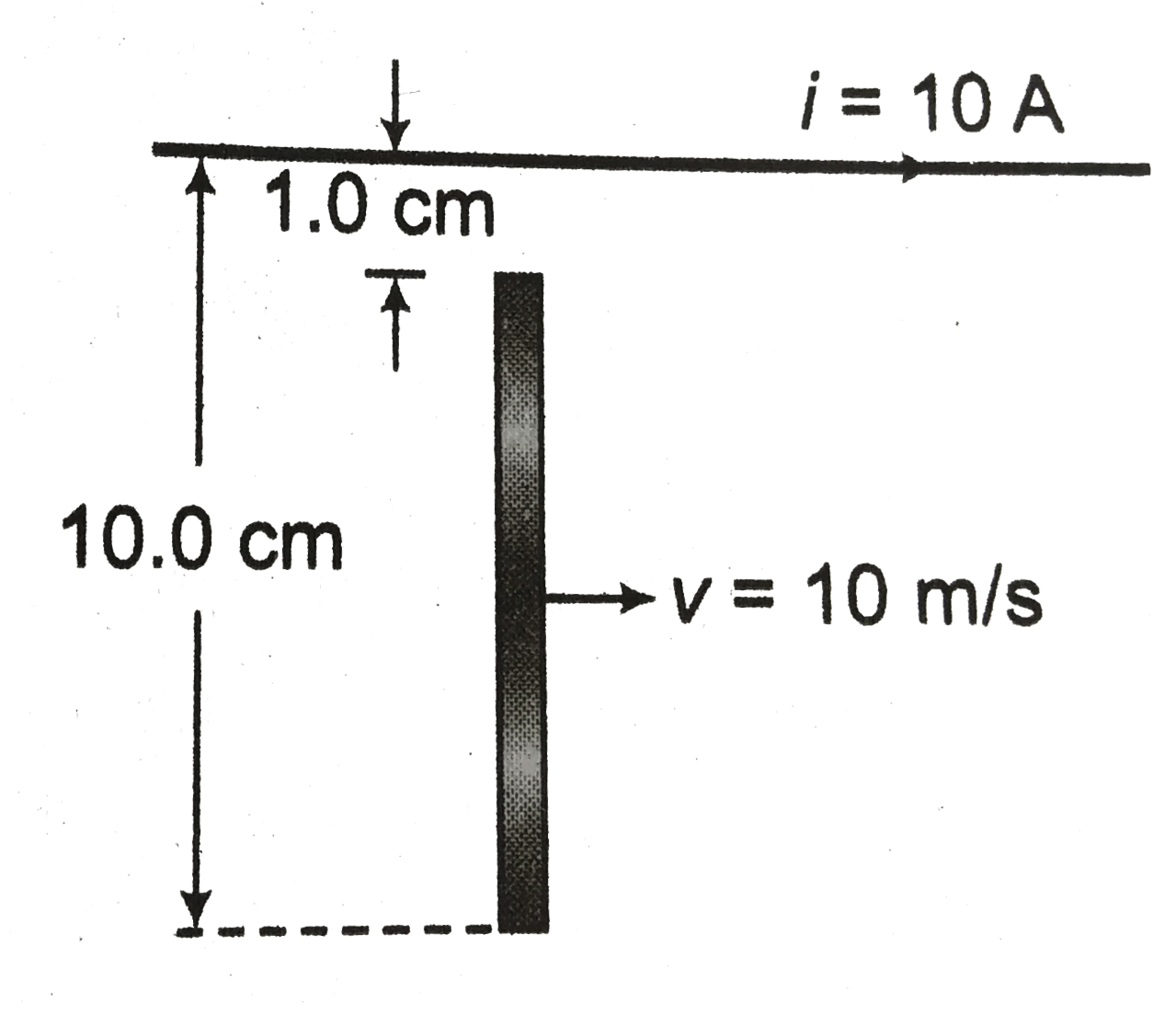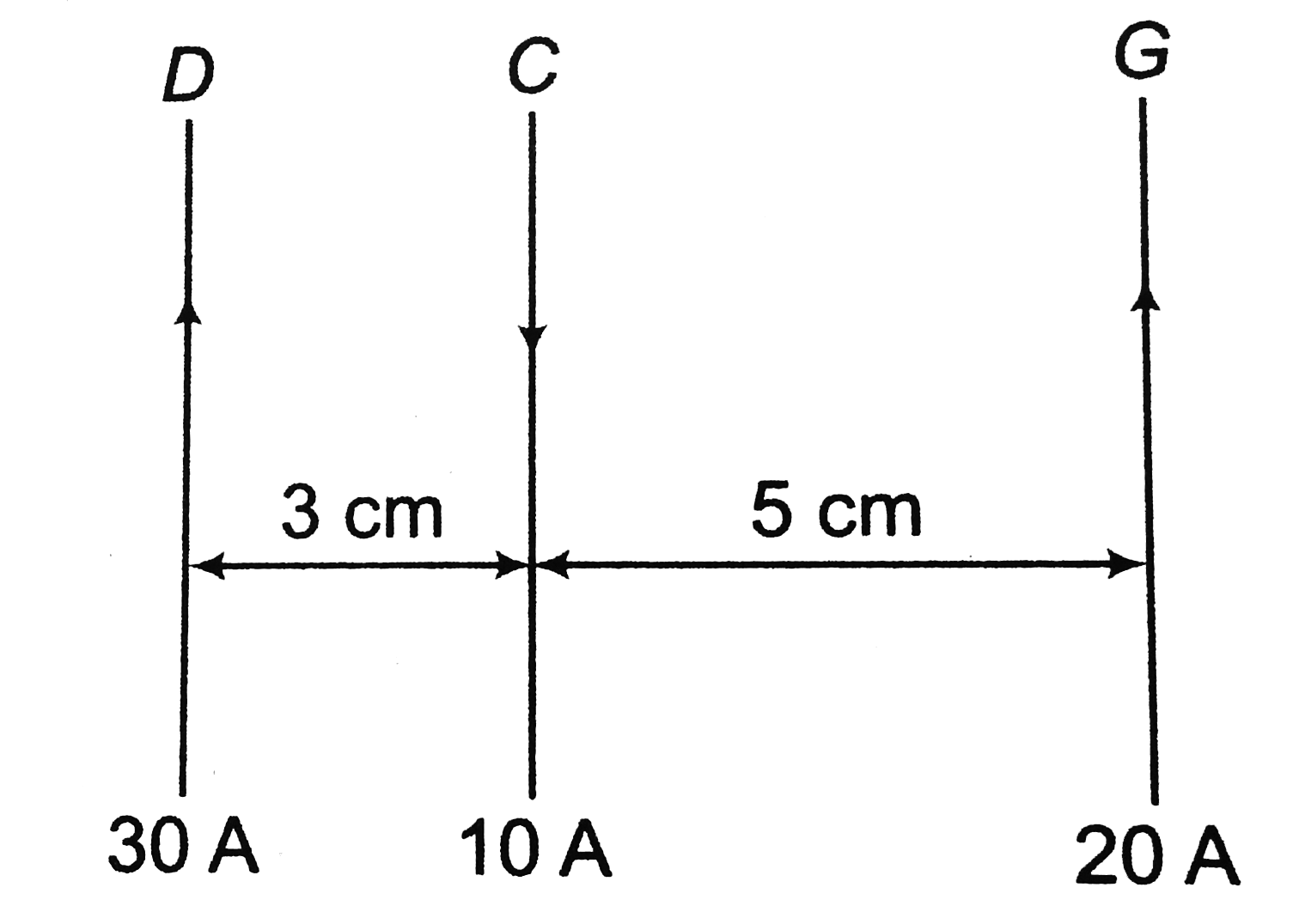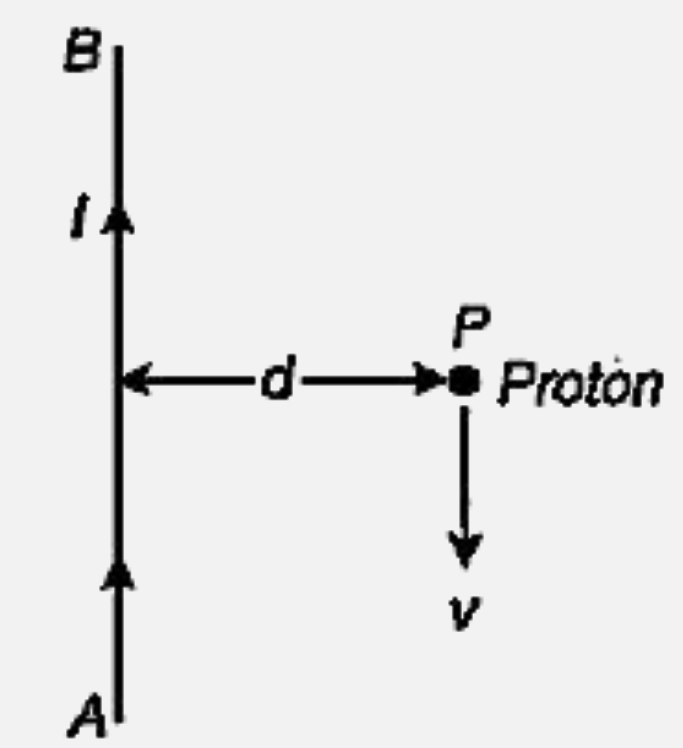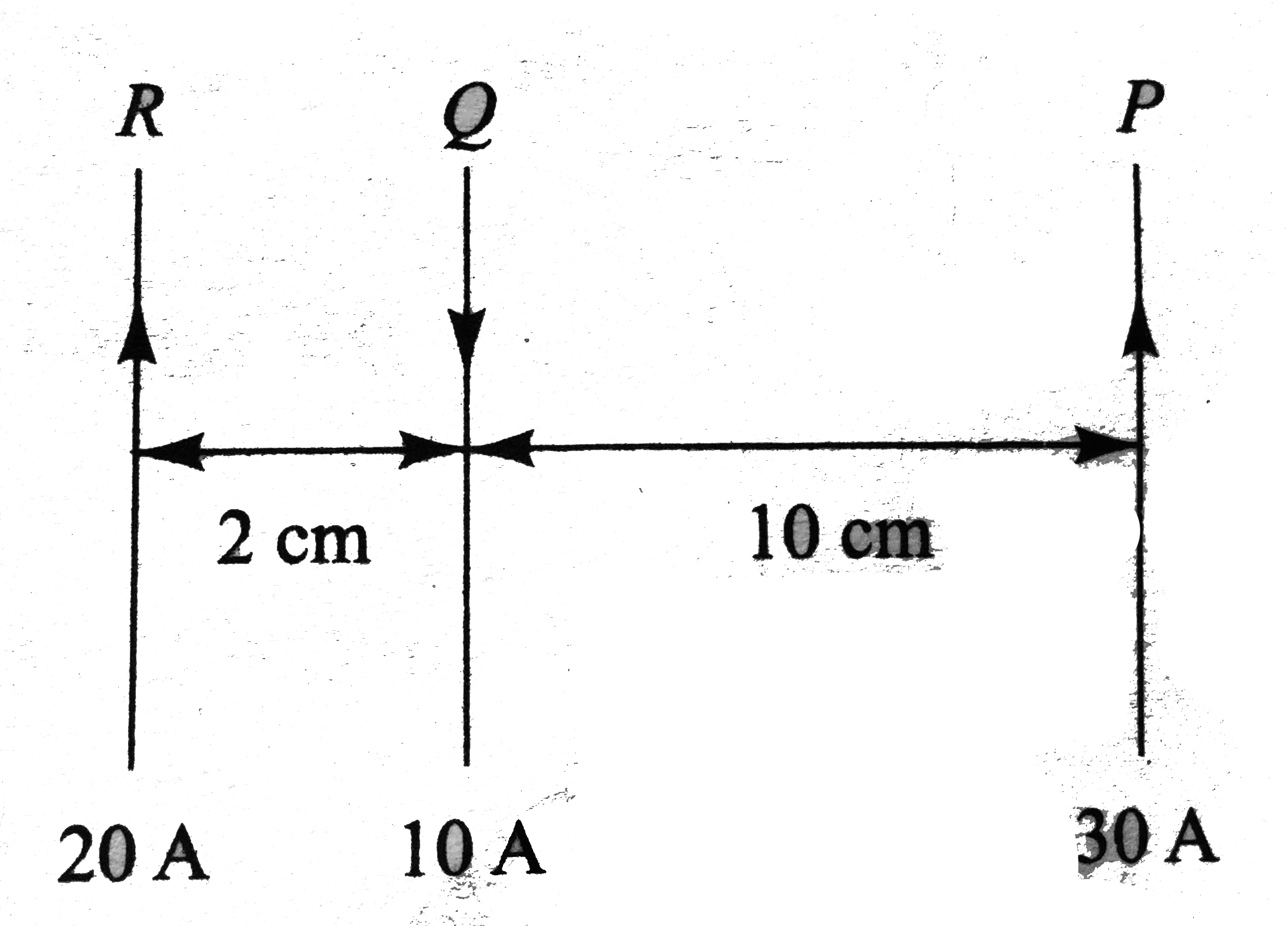Two straight wires each 10 cm long are parallel to one another and separated by 2 cm. when the current flowing in them is 30 A and 40 A respectively then the force experienced by either of the wires is
1.2×10−3N
12×10−3N
11.2×10−3N
10.2×10−3N
The correct Answer is:a
To solve the problem of finding the force experienced by either of the two parallel wires carrying currents, we can follow these steps:
Step 1: Understand the Given Data
We have two wires:
- Length of each wire, L=10cm=0.1m
- Separation between the wires, R=2cm=0.02m
- Current in the first wire, I1=30A
- Current in the second wire, I2=40A
Step 2: Use the Formula for the Force Between Two Parallel Current-Carrying Wires
The force per unit length between two parallel wires carrying currents can be calculated using the formula:
F=μ0I1I2L2πR
where:
- μ0 is the permeability of free space, μ0=4π×10−7T m/A
Step 3: Substitute the Values into the Formula
Substituting the known values into the formula:
F=(4π×10−7)×(30)×(40)×(0.1)2π×(0.02)
Step 4: Simplify the Expression
1. Cancel π from the numerator and denominator:
F=4×10−7×30×40×0.12×0.02
2. Calculate the denominator:
2×0.02=0.04
3. Now substitute this back into the equation:
F=4×10−7×30×40×0.10.04
Step 5: Calculate the Numerator
Calculating the numerator:
4×30×40×0.1=480
Step 6: Final Calculation
Now substitute the numerator back into the equation:
F=480×10−70.04
Calculating 4800.04=12000:
F=12000×10−7=1.2×10−3N
Conclusion
The force experienced by either of the wires is:
F=1.2×10−3N
We have two wires:
- Length of each wire, L=10cm=0.1m
- Separation between the wires, R=2cm=0.02m
- Current in the first wire, I1=30A
- Current in the second wire, I2=40A
The force per unit length between two parallel wires carrying currents can be calculated using the formula:
- μ0 is the permeability of free space, μ0=4π×10−7T m/A
Substituting the known values into the formula:
1. Cancel π from the numerator and denominator:
Calculating the numerator:
Now substitute the numerator back into the equation:
The force experienced by either of the wires is:
Topper's Solved these Questions
- MAGNETIC FIELD AND FORCESBOOK - DC PANDEY ENGLISHCHAPTER - MAGNETIC FIELD AND FORCESEXERCISE - Match the following
4 Videos
- INTERFERENCE AND DIFFRACTION OF LIGHTBOOK - DC PANDEY ENGLISHCHAPTER - INTERFERENCE AND DIFFRACTION OF LIGHTEXERCISE - Level 2 Subjective
5 Videos
- MAGNETICSBOOK - DC PANDEY ENGLISHCHAPTER - MAGNETICSEXERCISE - MCQ_TYPE
1 Videos
Similar Questions
The long, staight wires, each carrying an electric current of 5.0 A, are kept parallel to each other at a separation of 2.5 cm. Find the magnitude of the magnetic force experienced by 10 cm of a wire.
View SolutionTwo long parallel wires are 30 cm apart carrying currents 10 A and 15 A respectively in the same direction. The force acting over a length of 5 m of the wires is
View SolutionTwo long straight parallel conductors separated by a distance of 0.5m carry currents of 5A and 8A in the same direction. The force per unit length experienced by each other is
View SolutionIn figure, a wire perpendicular to a long straight wire is moving parallel to the later with a speed v=10m/s in the direction of the current flowing in the later. The current is 10A. What is the magnitude of the potential difference between the ends of the moving wire?

View SolutionTwo long straight wires are set parallel to each other Each carries a current i in the same direction and the separation between them is 2r. The intensity of the magnetic field midway between them is
View SolutionConsider three long straight parallel wire as shown in figure. Find the force experienced by a 25cm length of wire C.

View SolutionTwo long straight wires are set parallel to each other. Each carriers a current i in the same direction and the separation between them is 2r. The intensity of the magnetic field midway between them is

View SolutionA and B are two infinitely long straight parallel cinductors C is another straight of length 1 m parallel to A and B direction of the force experienced by C

View SolutionA long straight wire AB carries a current I. A proton P travels with a speed v, parallel to the wire at a distance d from it in a direction opposite to the current as shown in the figure. What is the force experienced by the proton and what is its direction?

View SolutionThree long, straight and parallel wires are arranged as shown in Fig. The forces experienced by 10 cm length of wire Q is

View Solution
